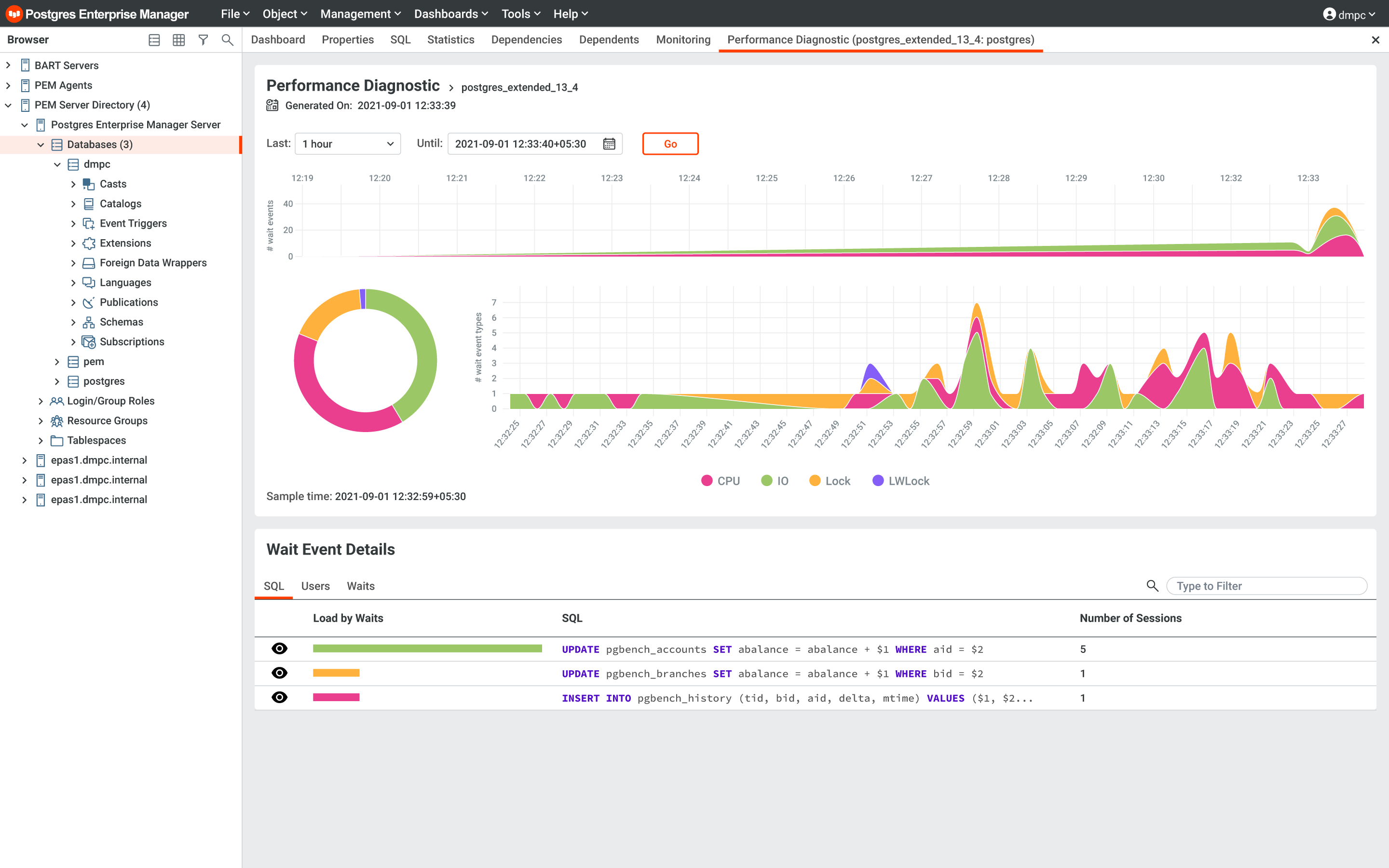Postgres Monitoring & Query Performance
Monitoring is the eyes and the ears of the database world. It tells you when your Postgres databases are performing well, when they are performing properly and, more importantly, when they are not... and what you can do about it.
Postgres Enterprise Manager
Postgres Enterprise Manager is the best way to manage, monitor and optimize PostgreSQL and EDB Postgres Advanced Server.

Fully Managed Means Fully Monitored
Get the benefits of fully managed Postgres with EDB BigAnimal.
Feature Comparison
Database Administration |
pgAdmin | Postgres Enterprise Manager |
|---|---|---|
|
Server connection manager
|
||
|
Cluster objects management
|
||
|
Database objects management
|
||
|
Log manager
|
- | |
|
Table editor
|
||
|
Restore points
|
||
|
Password management
|
||
|
Grant wizard
|
||
|
Data export/import
|
||
|
Maintenance operations
|
||
|
Storage manager
|
||
|
Backup & restore
|
||
|
Core usage reports
|
Developer tools |
pgAdmin | Postgres Enterprise Manager |
|---|---|---|
|
PL/pgSQL & EDB-SPL debugger
|
||
|
Query editor
|
||
|
Query history
|
||
|
Data viewer and editor
|
||
|
Geometry data viewer
|
||
|
JSON data editor
|
||
|
Schema diff
|
||
|
Entity Relationship Diagrams (ERD)
|
||
|
psql command-line interface
|
Job/Task scheduling |
pgAdmin | Postgres Enterprise Manager |
|---|---|---|
|
pgAgent
|
- | |
|
PEM agent
|
- | |
|
System jobs scheduling
|
||
|
User-defined tasks scheduling
|
||
|
Alert blackouts scheduling
|
- |
Monitoring |
pgAdmin | Postgres Enterprise Manager |
|---|---|---|
|
Probes
|
- | |
|
Dashboards
|
- | |
|
Alerting
|
- | |
|
Email groups
|
- | |
|
SNMP traps
|
- | |
|
Remote
|
- |
Performance |
pgAdmin | Postgres Enterprise Manager |
|---|---|---|
|
Server performance expert
|
- | |
|
Log analysis expert
|
- | |
|
Tuning wizard
|
- | |
|
Capacity management reports
|
- | |
|
Performance diagnostic dashboard
|
- | |
|
SQL profiler
|
- | |
|
Index advisor
|
- |
Integration |
pgAdmin | Postgres Enterprise Manager |
|---|---|---|
|
EDB Backup and Recovery Tool (BART) management and monitoring
|
- | |
|
EDB Failover Manager (EFM) management and monitoring
|
- | |
|
Alerts pushed to Nagios
|
- | |
|
EDB Postgres Distributed multi-master replication monitoring
|
- | |
|
Slony replication monitoring
|
- | |
|
xDB replication clusters monitoring
|
- | |
|
Third-party REST API
|
- | |
|
Third-party Webhooks
|
- |
Security & Compliance |
pgAdmin | Postgres Enterprise Manager |
|---|---|---|
|
Audit logging manager
|
- | |
|
Kerberos authentication (GSSAPI)
|
||
|
Active Directory Domain Services for Kerberos (SSPI)
|
||
|
Two-Factor Authentication (2FA)
|
||
|
Server security expert
|
- | |
|
Voluntary Product Accessibility Template (VPAT)
|
- |
Configuration |
pgAdmin | Postgres Enterprise Manager |
|---|---|---|
|
High Availability Setup
|
- | |
|
Server configuration expert
|
- | |
|
System configuration reports
|
- |